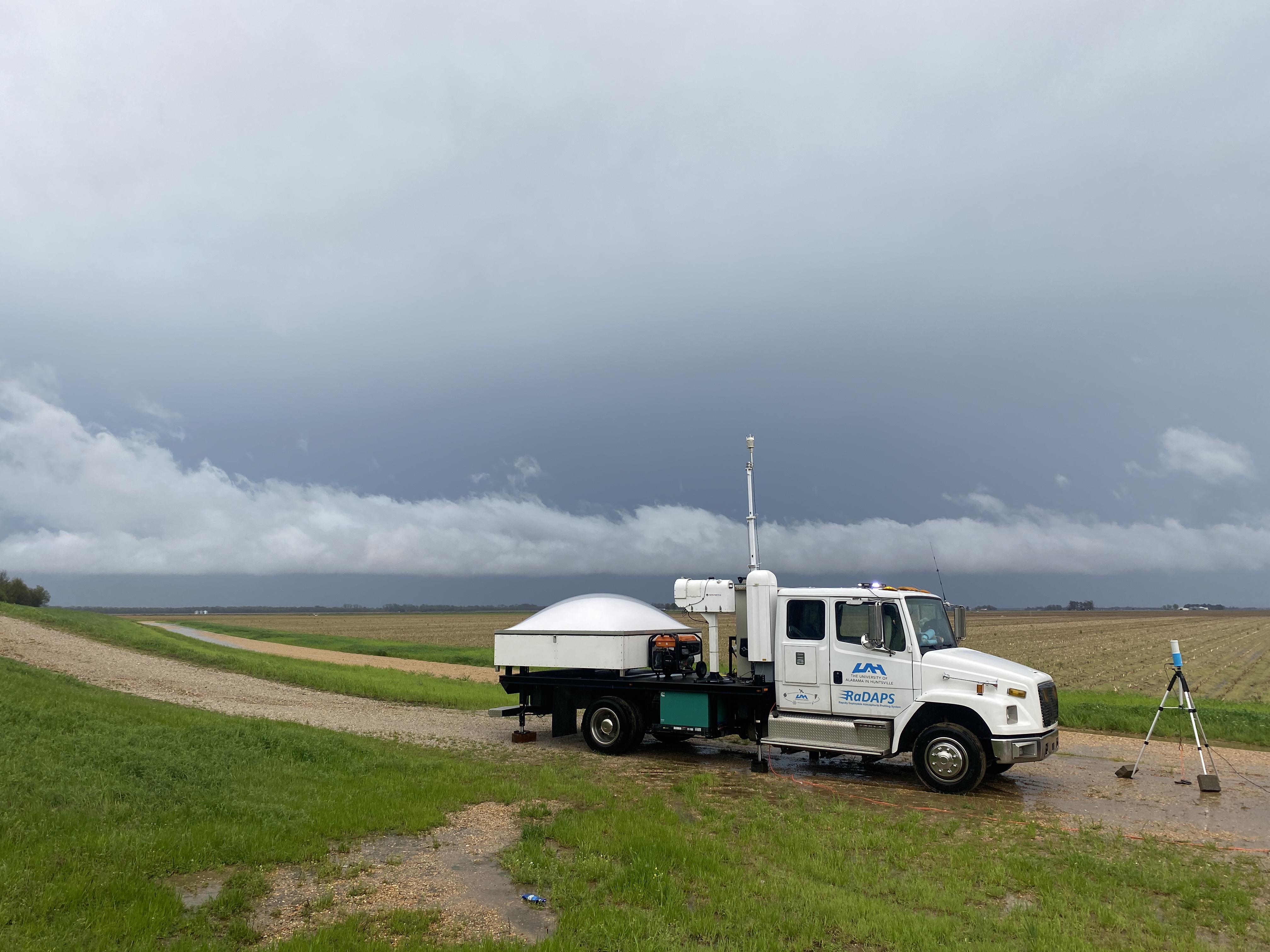|
To get a better understanding of severe weather, tropical cyclones, winter weather, or the boundary layer interactions, sampling high temporal measurements of the atmospheric thermodynamic state and wind profiles are needed. RaDAPS is packed with 4 main instruments and a 4-m surface station that is designed to gather theses high temporal measurements. When acquired by SWIRLL in 2011, the 2002 Freightliner was an ambulance with the patient area redesigned to become the MIPS platform. In 2013 while sitting in the SWIRLL berm taking continuous measurements, a fire started in the back of the truck after a computer overheated. By the Spring of 2016, the damaged patient area was removed, a flatbed was added, and the truck became what is now our RaDAPS platform. RaDAPS has four main instruments mounted on the back – a 915 MHz radar wind profiler, a Microwave Profiling radiometer, a ceilometer, and a vertically pointing K-Band radar. There are four hydraulic leveling jacks that are used to level the vehicle. As with all of the UAH SWIRLL vehicles, RaDAPS is operated by UAH SWIRLL faculty, staff, and students. Once on site, RaDAPS takes about 15-20 minutes to deploy. RaDAPS is typically operated by 1-2 personnel and is often accompanied by a sounding team that can be used for profile intercomparison. 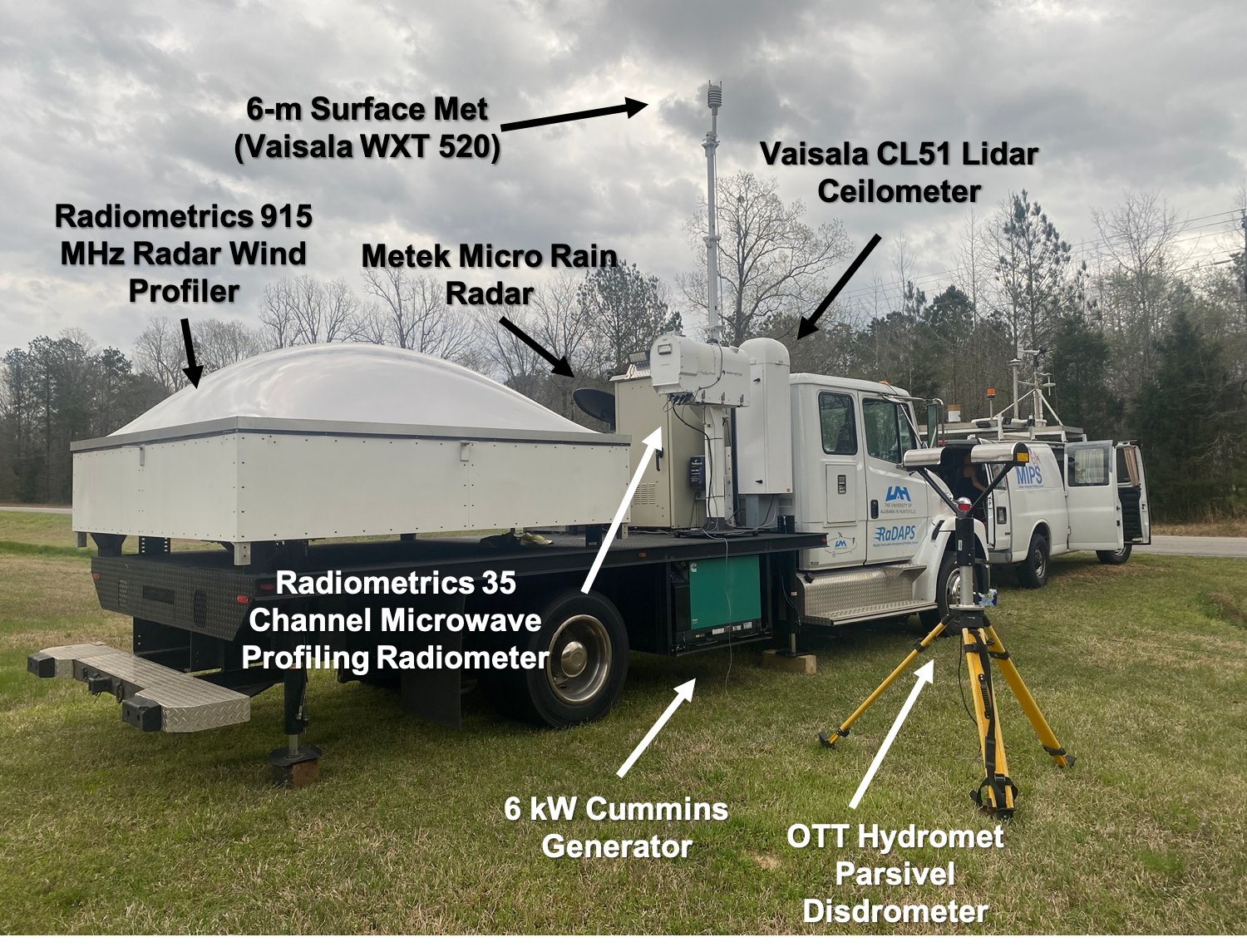
The current RaDAPS configuration. When RaDAPS is operational, live data will be posted to the SWIRLL live data site. This data can be accessed by clicking the box below. On occasion, the RaDAPS will be placed in the SWIRLL berm for 24/7 data collection if the MIPS platform is down. |
Explore each link below to see each instrument that is on RaDAPS, how it works, and what data it gathers:
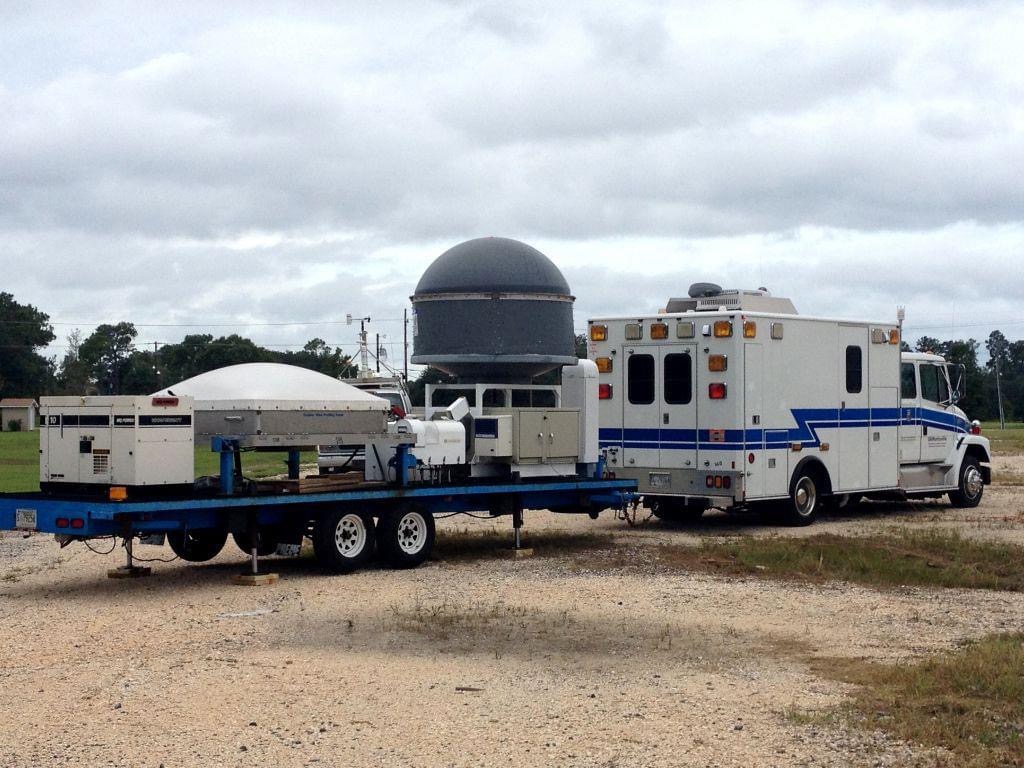
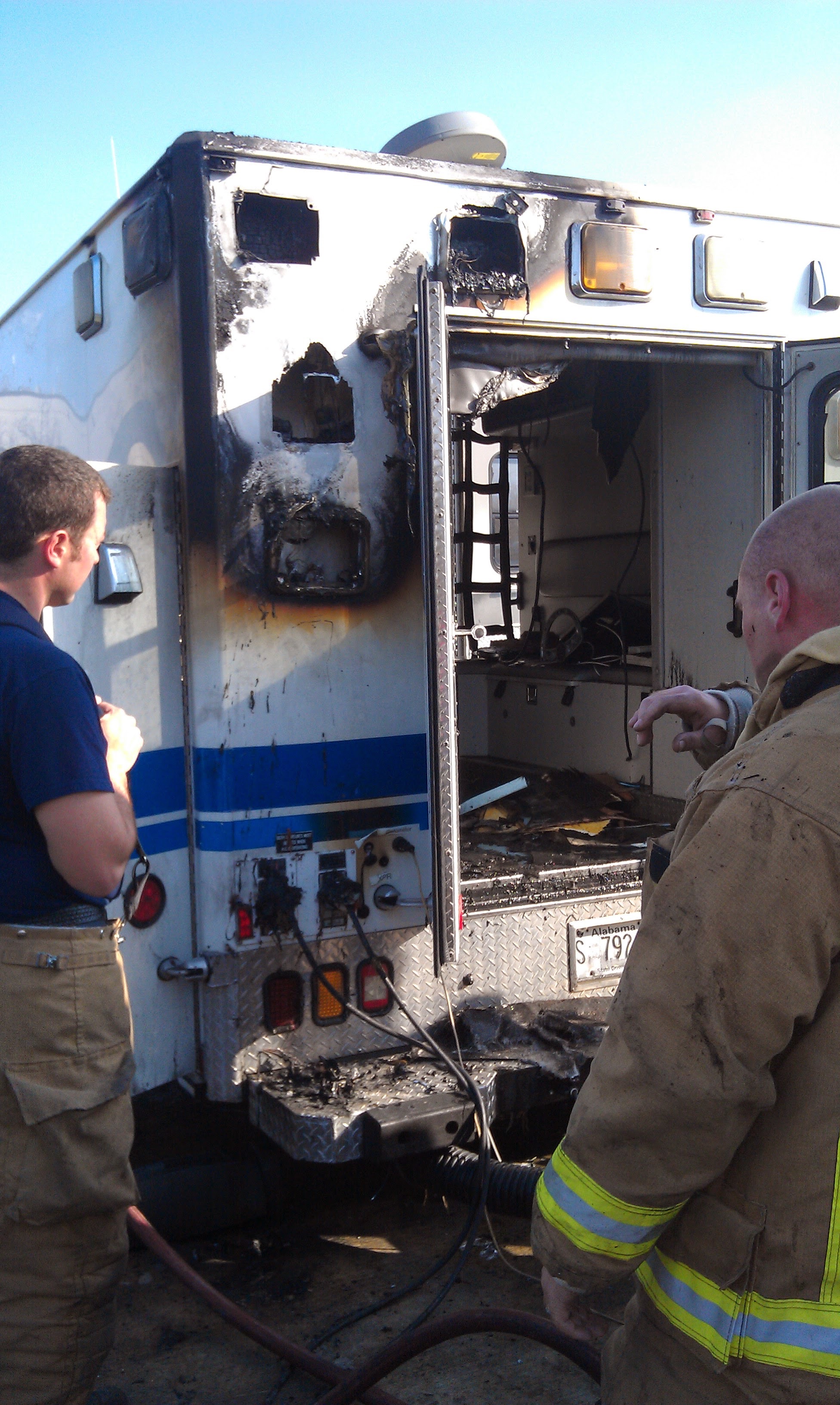
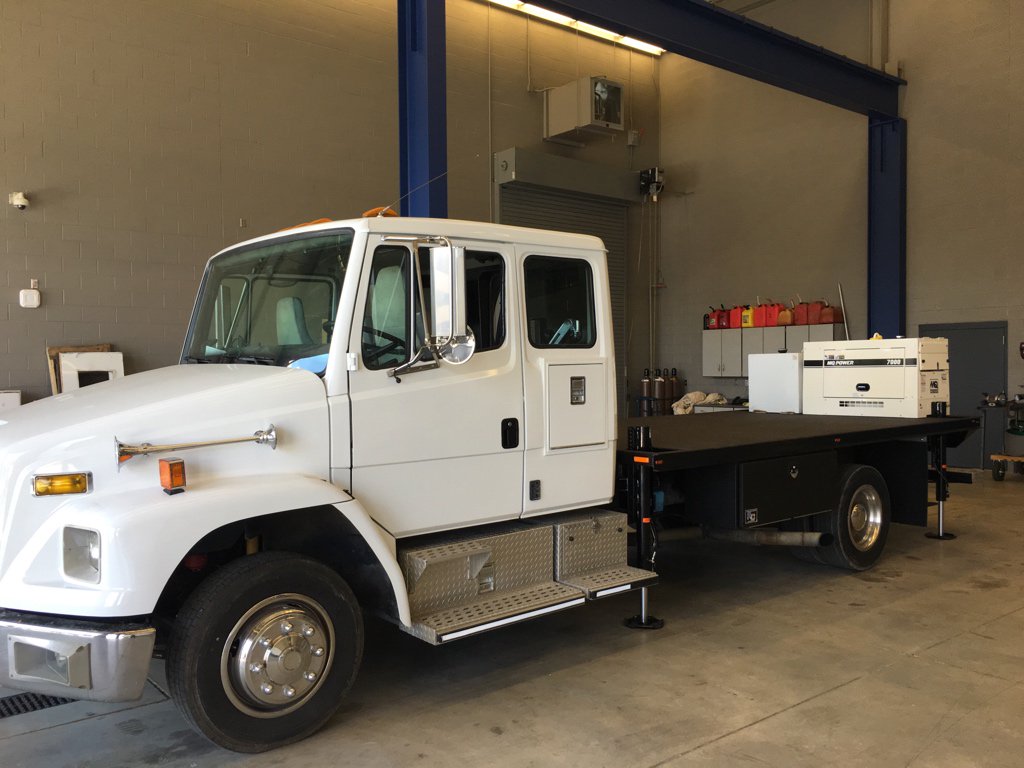
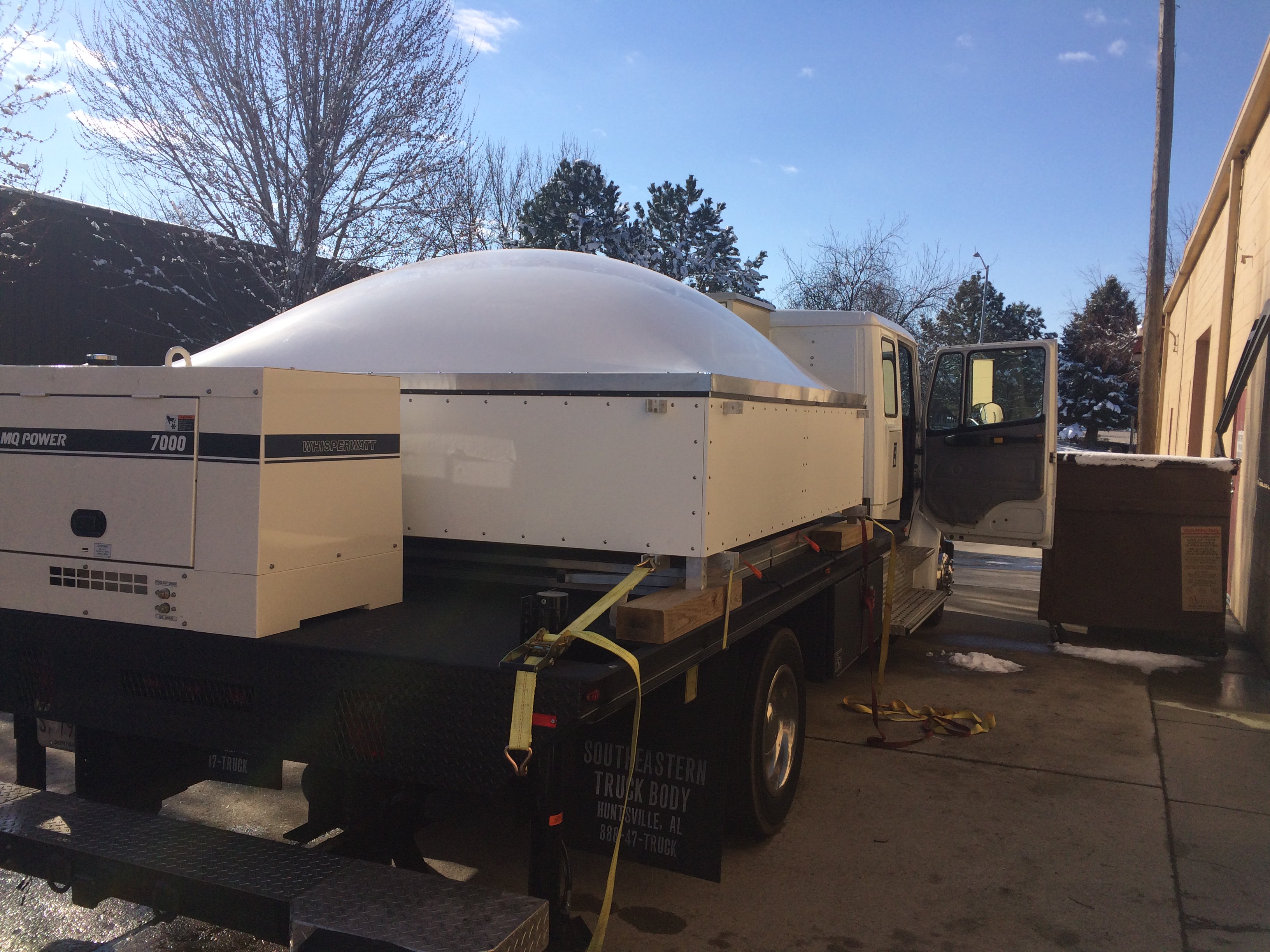
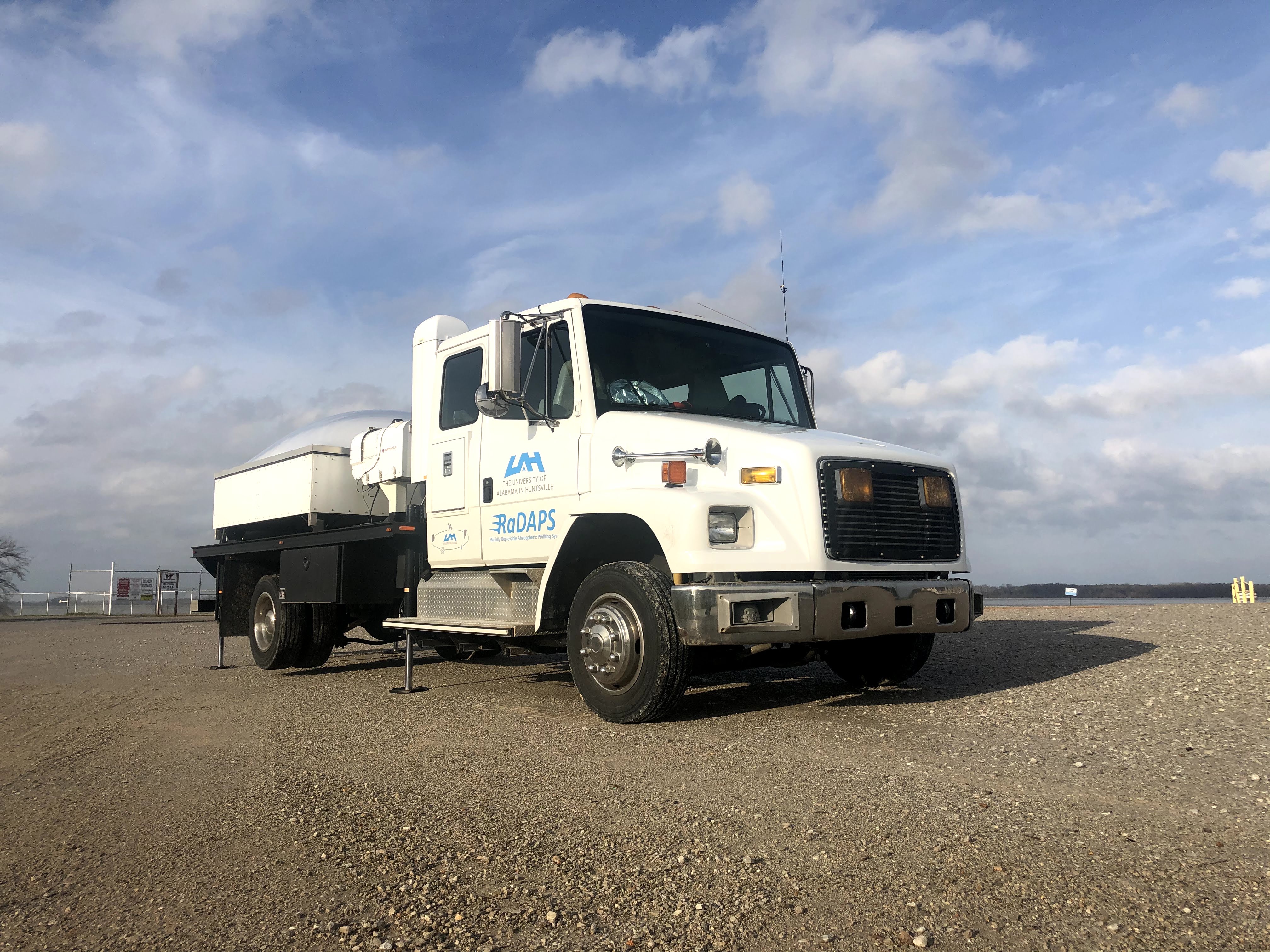
RaDAPS deployed next to the Tennessee River ahead of severe weather. 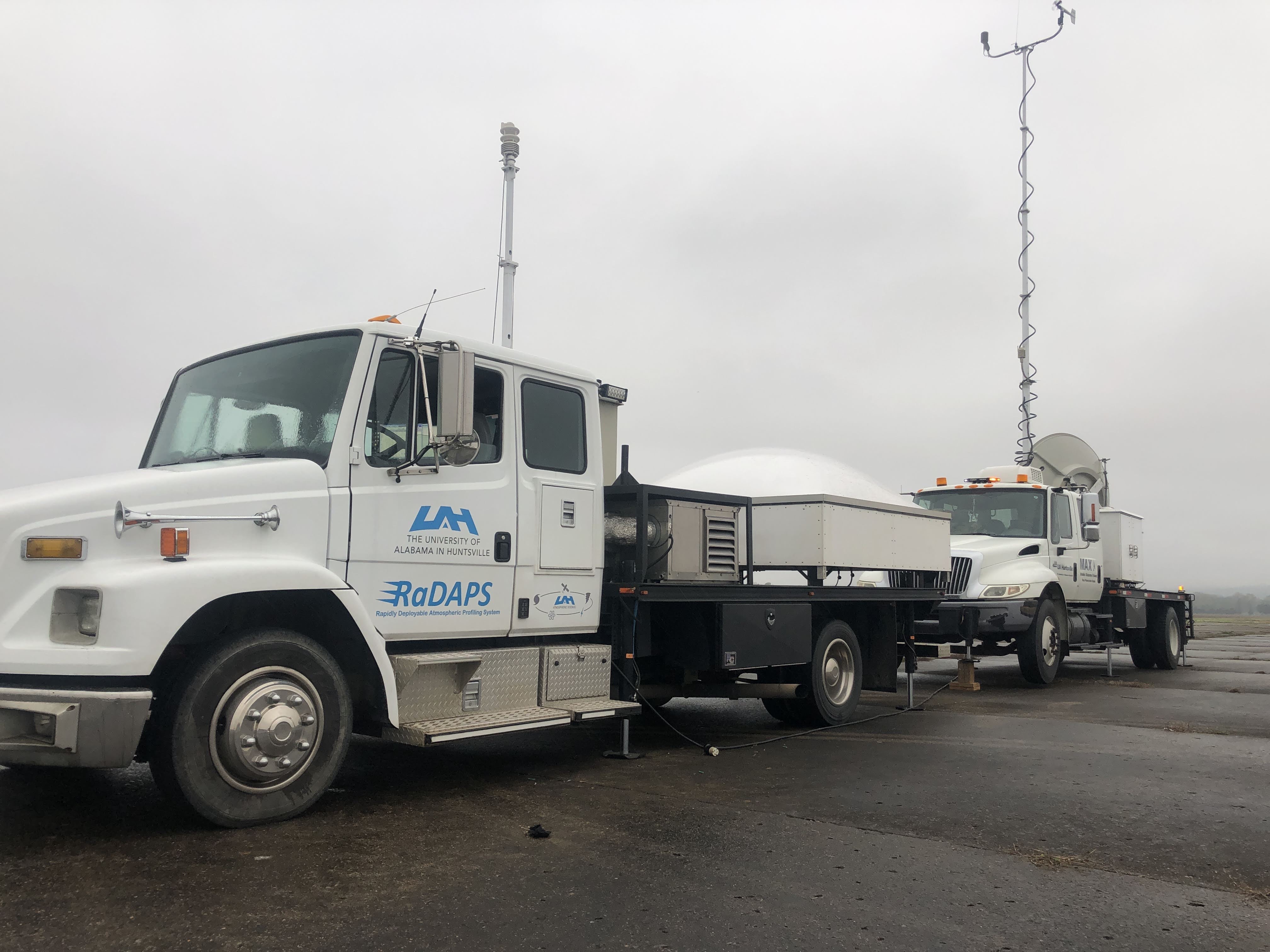
RaDAPS deployed with MAX at the Courtland Airport for VORTEX-SE. |

